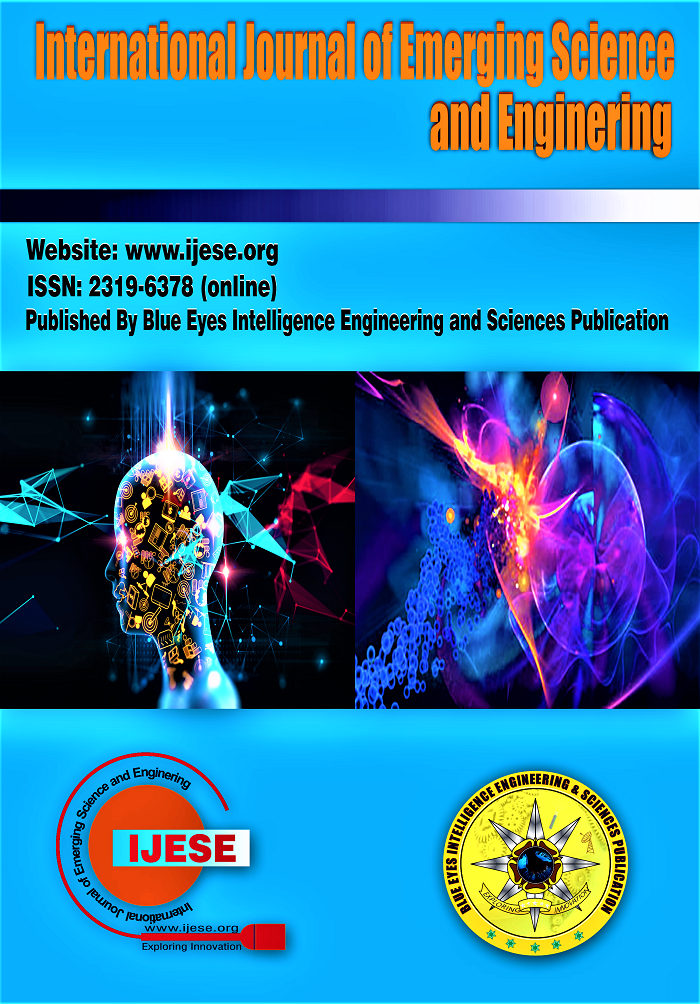Eye Disease Prediction Among Corporate Employees using Machine Learning Techniques
Main Article Content
Abstract
In the IT sector, employees use systems for more than 6 hs, so they are affected by many health problems. Mostly In the IT sector, employees are affected with eye diseases like eye strain, eye pain, burning sensation, double vision, blurring of vision, and frequent watering. The major goal of this research is to identify the different types of eye problems encountered, the symptoms present, and the population afflicted by eye diseases in order to accurately forecast outcomes using a Machine learning techniques for real-time data sets.
Downloads
Article Details
Section

This work is licensed under a Creative Commons Attribution-NonCommercial-NoDerivatives 4.0 International License.
How to Cite
References
An, G.; Omodaka, K.; Tsuda, S.; Shiga, Y.; Takada, N.; Kikawa, T.; Nakazawa, T.; Yokota, H.; Akiba, M. Comparison of machine-learning classification models for glaucoma management. J. Health. Eng. 2018, 2018. https://doi.org/10.1155/2018/6874765
Agrawal, P.; Madaan, V.; Kumar, V. Fuzzy rule-based medical expert system to identify the disorders of eyes, ENT and liver. Int. J. Adv. Intell. Paradig. 2015, 7, 352–367. https://doi.org/10.1504/IJAIP.2015.073714
Sample, P.A.; Boden, C.; Zhang, Z.; Pascual, J.; Lee, T.W.; Zangwill, L.M.; inreb, R.N.; Crowston, J.G.; Hoffmann, E.M.; Medeiros, F.A.; et al. Unsupervised machine learning with independent component analysis to identify areas of progression in glaucomatous visual fields. Investig. Ophthalmol. Vis. Sci. 2005, 46, 3684–3692. https://doi.org/10.1167/iovs.04-1168
Imberman, S.P.; Ludwig, I.; Zelikovitz, S. Using Decision Trees to Find Patterns in an Ophthalmology Dataset. In Proceedings of the FLAIRS Conference, Palm Beach, FL, USA, 18–20 May 2011.
Arbelaez, M.C.; Versaci, F.; Vestri, G.; Barboni, P.; Savini, G. Use of a support vector machine for keratoconus and subclinical keratoconus detection by topographic and tomographic data. Ophthalmology 2012, 119, 2231–2238. https://doi.org/10.1016/j.ophtha.2012.06.005
Fageeri, S.O.; Ahmed, S.M.M.; Almubarak, S.A.; Muazu, A.A. Eye refractive error classification usingmachine learning techniques. In Proceedings of the IEEE International Conference on Communication,Control, Computing and Electronics Engineering, Khartoum, Sudan, 16–17 January 2017; pp. 1–6. https://doi.org/10.1109/ICCCCEE.2017.7867660
Organization, W.H. International Classification of Diseases (ICD). Available online: http://www.who.int/ classifications/icd/ICD10Volume2_en_2010.pdf (accessed on 1 January 2017).
Waudby, C.J.; Berg, R.L.; Linneman, J.G.; Rasmussen, L.V.; Peissig, P.L.; Chen, L.; McCarty, C.A. Cataract research using electronic health records. BMC Ophthalmol. 2011, 11, 32. https://doi.org/10.1186/1471-2415-11-32
Sullivan, B.D.; Crews, L.A.; Messmer, E.M.; Foulks, G.N.; Nichols, K.K.; Beginninger, P.; Geerling, G.; Figueiredo, F.; Lemp, M.A. Correlations beten commonly used objective signs and symptoms for the diagnosis of dry eye disease: Clinical implications. Acta Ophthalmol. 2014, 92, 161–166. https://doi.org/10.1111/aos.12012
Moccia, S.; De Momi, E.; El Hadji, S.; Mattos, L.S. Blood vessel segmentation algorithms—Review of methods, datasets and evaluation metrics. Comput. Methods Programs Biomed. 2018, 158, 71–91. https://doi.org/10.1016/j.cmpb.2018.02.001
Fraz, M.M.; Remagnino, P.; Hoppe, A.; Uyyanonvara, B.; Rudnicka, A.R.; On, C.G.; Barman, S.A. Blood vessel segmentation methodologies in retinal images–a survey. Comput. Methods Programs Biomed. 2012, 108, 407–433. https://doi.org/10.1016/j.cmpb.2012.03.009
Quellec, G.; Lamard, M.; Erginay, A.; Chabouis, A.; Massin, P.; Cochener, B.; Cazuguel, G. Automatic detection of referral patients due to retinal pathologies through data mining. Med. Image Anal. 2016, 29, 47–64. https://doi.org/10.1016/j.media.2015.12.006
Burgansky-Eliash, Z.; Wollstein, G.; Chu, T.; Ramsey, J.D.; Glym, C.; Noecker, R.J.; Ishikawa, H.; Schuman, J.S. Optical coherence tomography machine learning classifiers for glaucoma.





